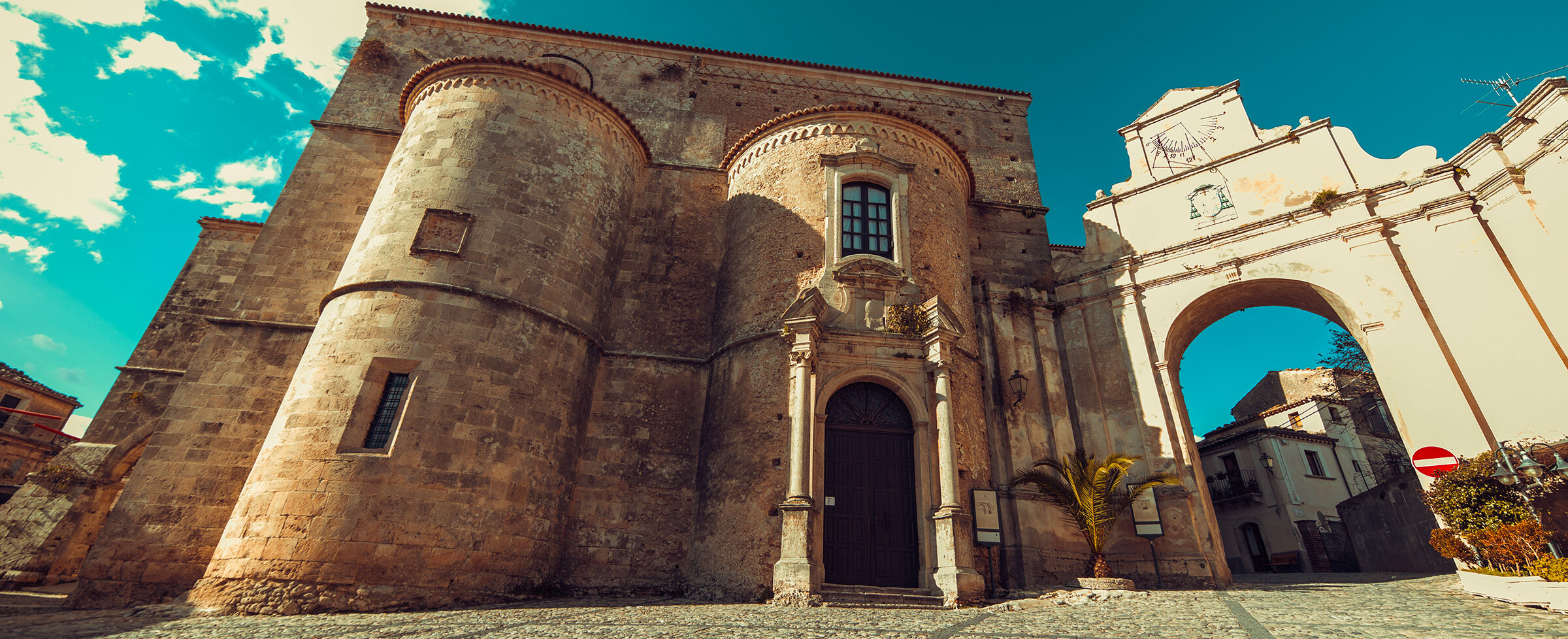Top things to see in Locri area
Driving a car on state road number 106, in the Ionian Coast of Calabria, a tourist explorer can push himself to the extreme south of the Italian Peninsula.
We are in the province of Reggio Calabria, in a land known as Locride. Well, Locride was also an ancient Greek region, it was the homeland of the colonizers who came to Calabria from the eighth century BC onwards.
Visit Gerace and Stilo in Locri area. There are some of the most stimulating travel itineraries in Calabria.
The curious tourist can wander around to discover the greatness of Tommaso Campanella’s philosophical ideas, in Stilo, and can also “follow in the footsteps” of the Basilian monks who settled on the heights around the valley of the Stilaro fiumara, between Pazzano and Bivongi.
There are many cultural itineraries in Locride, many villages involved, from Riace to Roccella Jonica, up to the impressive village of Gerace.
Once upon a time in Calabria, when cultural influence came from East
In the past Calabria turned its gaze to the East (Asia Minor, Greece).
From there, and then from Sicily dominated by Arabs, many religious hermits arrived in Calabria looking for isolated places where they could peacefully live their spiritual vocation.
We are talking about the monks who followed St. Basil model. In general, we can tell stories about solitary figures – of great moral belief and of exceptional physical temperament.
In Calabria they established a fruitful Byzantine culture characterizing the entire Middle Ages. Monasteries, sometimes even made up of a single monk, were the centres for spreading faith and circulating knowledge coming from Byzantium.
That was a cultural inheritance then merged with the new ideas of Normans, Swabians and Angevins in 11th and next centuries… Eastern Christianity and Western Christianity found a synthesis in Calabria.
Cattolica di Stilo, one of the greatest monuments in Calabria
Stilo is one of the great destinations for cultural tourism in Calabria.
The interior walls of the small church of Cattolica are a real program of frescoes, capable of telling the sensibilities, the ideas and the iconic figures of the Byzantine culture.
A place pervaded by religiousness
In Bivongi you can get close to the places frequented by the fascinating figure of St. Giovanni Theristis, as in the nearby Pazzano you can make a spectacular visit to the hermitage of santa Maria della Stella, in a cave of the homonymous mountain that was shelter of Greek monks before turning into a Marian sanctuary.
Monasterace, Locri and Gerace
Driving along the 106, stop at the MAK, the archaeological museum of Monasterace marina. Here is kept “the most fascinating dragon of Calabria” – a sublime mosaic.
Locri and Gerace, whose stories are inextricably linked, allow us to study in depth crucial aspects of Greek colonization – for example the archaeological park in Marasà area, where you visit the remains of the fabulous Ionic temple.
It’s also very important to understand the aspects of the prestigious episcopal history, which can be appreciated discovering the majestic cathedral built by Norman engineers and Byzantine craftsmen in Gerace, as well as the rich diocesan museum that opens with the tapestry of Jan Leyniers.
Nik Spatari, an artist, a genius of the XX and XXI century
In MuSaBa park, in Mammola, the art of Nik Spatari is celestial, hypnotic, enigmatic and futuristic. A triumph of contemporary art permeated by colors, geometries, philosophy.
It perhaps kidnaps you more than the local flavors, such as the famous stockfish cuisine.
Awesome pieces of mosaic art
The Roman villa of Casignana, dating back to the 1st century A.D., delights the eyes of visitors with masterly-finished mosaics.
The beauty of the colored tiles is the outcome of hard work and admirable patience by excellent artists.
Bergamot is the green treasure
On the southernmost Ionian Coast the bergamotto is the prince of the products of the earth, a fruit sought after especially by the creators of perfumes.
Stunning views on the 106 road
The state road 106, rolling south, ends in Brancaleone and in Capo Spartivento, one of the southernmost points of the entire Italian Peninsula.
Moving along the SS 106 towards Palizzi, you can take a short excursion to admire the Calanchi, very particular whitish sediments, which almost seem to move on the lunar surface.

